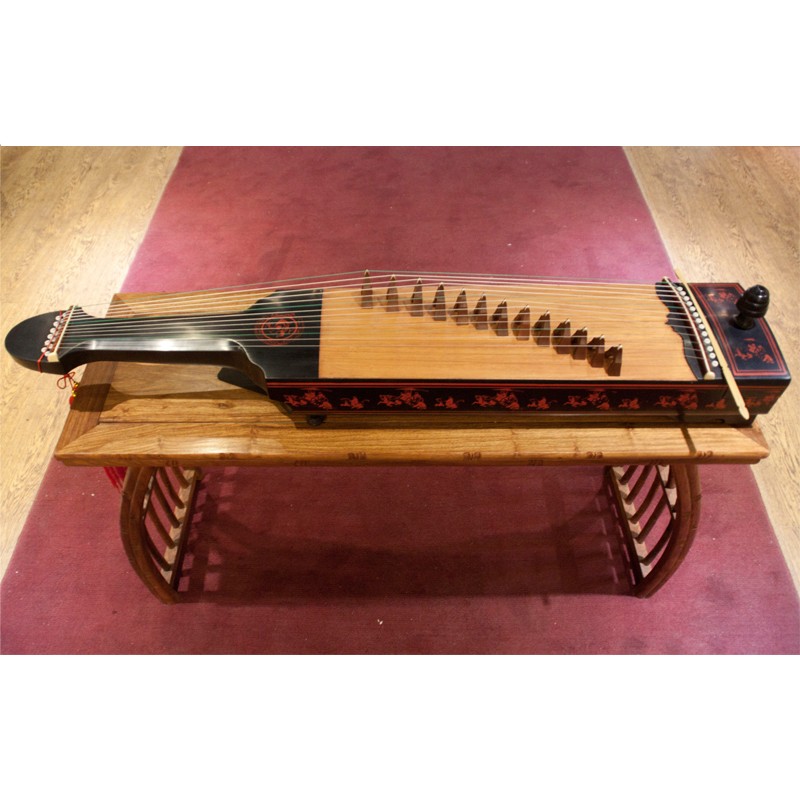zhu overview
 Zhu (pinyin: Zhù) is the earliest percussion instrument in China. It was widely popular from the Warring States Period to the Sui and Tang Dynasties, and was lost after the Song Dynasty. Building in the Warring States period has been widely popular. From time to time, a famous family named Gao Jianli, who had hit Zhu to see off Jing Ke, who had assassinated the King of Qin. When Liu Bang, Emperor Taizu of the Han Dynasty composed "The Song of the Great Wind", he also personally built the accompaniment.
Zhu (pinyin: Zhù) is the earliest percussion instrument in China. It was widely popular from the Warring States Period to the Sui and Tang Dynasties, and was lost after the Song Dynasty. Building in the Warring States period has been widely popular. From time to time, a famous family named Gao Jianli, who had hit Zhu to see off Jing Ke, who had assassinated the King of Qin. When Liu Bang, Emperor Taizu of the Han Dynasty composed "The Song of the Great Wind", he also personally built the accompaniment.It has been lost since the Song Dynasty. For thousands of years, only records have been seen, but no real objects have been found. However, in 1993, archaeologists discovered the real object in the tomb of Yuyang, the queen of the Western Han Dynasty, in the Changsha River. At that time, it was called the first major discovery of musical instrument archaeology in the more than 40 years since the founding of the People's Republic of China by the cultural relics community. Academic circles also call this Yuyang building "the first building in the world".
The buildings displayed in the Changsha Slips and Slips Museum are shaped like baseball bats, with a slender neck and five silk strings. A movable column horse is supported between the strings and the building.
According to the pattern of spirits striking on the lacquer coffin of the Mawangdui Western Han tomb in Changsha, the lacquer ware unearthed from the Western Han tomb in Lianyungang, Jiangsu, and the portrait bricks of the Tanghe River in Nanyang, you can see the special playing posture; it is not as horizontal as when playing the zheng Instead, place it straight in front of you.
The wider part of the building should be a speaker, which should be placed in a low place in the front. The head connected to the neck is facing the performer. When playing, press the strings at the neck with the left hand, and the right hand holds the bamboo piece to strike the strings. There is a saying of "hitting the building".
Five-stringed buildings are divided into five-stringed buildings in the Warring States period and five-stringed buildings in the Han Dynasty, as well as thirteen-stringed buildings in the Han Dynasty and thirteen-stringed buildings in the Song Dynasty.
Later, in the Southern and Northern Dynasties, it was used to accompany Xianghe songs, and in the Sui and Tang Dynasties, it was used to accompany Qing music.
- Pinyin:Zhù
- type:stringed musical instrument
- sound characteristics:sad and agitated
- period:Pre-Qin
overview of other similar instruments
- sanyanxiao overview
- Daguangxian overview
- Leiqin overview
- hahao overview
- yandundagu overview
- Han Xiaozheng overview
- Fang Xiang overview
- guanzi overview
- zhuqin (Dao Qin) overview
- zhuiqin overview
- bangzi overview
- three-stringed piano overview
- Gehu overview
- xiao overview
- xiaokonghou overview
- Konghou overview
- Sheng overview
- suona overview
- hulusi overview
- gushao overview
 渝公网安备 50010702504639号
渝公网安备 50010702504639号